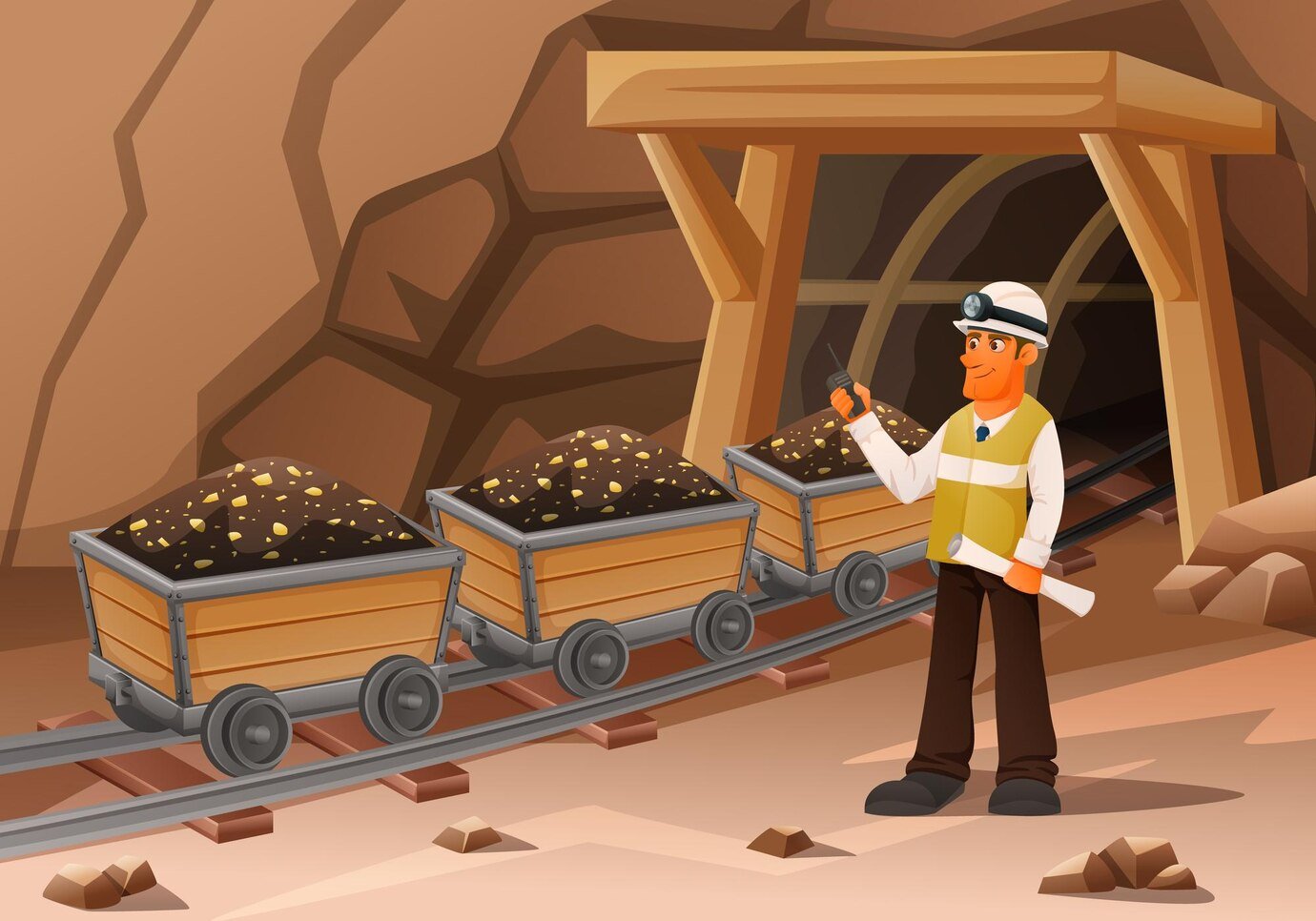Building a financial model for a copper mining project is crucial for assessing its economic viability, forecasting cash flows, and facilitating informed investment decisions. A well-structured financial model enables stakeholders to analyze project risks, returns, and operational efficiencies effectively.
Let’s try to learn how to build a copper mining financial model. We have also built a ready-to-go Copper Mining Financial Model template that can be used by a Founder, Entrepreneur or Analyst to input their company assumptions.
What is a Copper Mining Financial Model?
A copper mining financial model is a quantitative representation of the anticipated financial performance of a copper mining operation over time. It typically encompasses revenue forecasts, capital expenditures, operating expenses, financing assumptions, and cash flow analyses. This model is an essential tool for investors, managers, and other stakeholders to assess the project’s feasibility and profitability.
- Revenue Projections: Estimates of income generated from copper sales.
- Operating Expenses: Costs associated with mining operations, including labor, equipment, and maintenance.
- Capital Expenditures (CapEx): Long-term investments required for developing the mine and purchasing equipment.
- Financing Assumptions: Details about debt and equity financing, interest rates, and repayment terms.
- Key Performance Indicators (KPIs): Metrics like cash flow, net present value (NPV), and internal rate of return (IRR).
How to Build a Copper Mining Financial Model: Step-by-Step for Beginners

Step 1: Identify Your Assumptions
Start by outlining the key assumptions that will drive your financial model. These should include:
- Copper Price: Estimated selling price per pound of copper.
- Production Volume: The amount of copper to be mined per year.
- Operating Costs: Estimated costs per ton of copper produced.
- CapEx Requirements: Initial and ongoing capital expenditures for the mining operation.
- Financing Structure: Proportions of debt and equity, interest rates, and repayment terms.
Example Assumptions
- Copper Price: $4.00 per pound
- Production Volume: 100 million pounds per year
- Operating Costs: $1.50 per pound
- Initial CapEx: $200 million
- Debt Financing: 60% of total costs at an interest rate of 5%
Step 2: Develop a model structure
Organize your financial model in a spreadsheet for clarity and ease of use. Common sections to include are:
- Input Assumptions: A dedicated section for all key metrics.
- Revenue Projections: Detailed forecasts of copper revenue.
- Operating Expense Projections: Itemized operating costs.
- Capital Expenditure Schedule: Outline of expected CapEx.
- Financing Details: Breakdown of debt and equity financing.
- Cash Flow Statement: Summary of inflows and outflows over time.
- Key Performance Metrics: Summary of important financial ratios and metrics.
Step 3: Create the Input Assumptions Sheet
Start by creating an input assumptions sheet where all your key metrics are clearly defined. This will serve as the foundation of your model, making it easy to update and adjust assumptions without affecting the overall structure.
Step 4: Calculate Revenue Projections
After that, begin forecasting revenue based on your assumptions. For a copper mining operation, revenue is primarily derived from the sale of copper. The revenue projection can be calculated using the formula:
Revenue = Production Volume × Copper Price
Example Calculation
If the production volume is 100 million pounds and the copper price is $4.00 per pound:
Revenue = 100,000,000 lbs × 4.00 = $400,000,000
Step 5: Project Operating Expenses
Operating expenses for a copper mining operation typically include:
- Labor Costs: Salaries and wages for staff and laborers.
- Equipment Maintenance: Costs associated with maintaining mining equipment.
- Utilities: Energy and water costs required for operations.
- Other Expenses: General administrative and operational costs.
Estimate these costs based on historical data, industry benchmarks, or a fixed percentage of revenue.
Example Expense Structure
Assuming total operating costs of $1.50 per pound of copper produced:
Total Operating Expenses = Production Volume × Operating Cost per Pound Total Operating Expenses = 100,000,000 lbs× 1.50 = $150,000,000
Step 6: Estimate Capital Expenditures (CapEx)
Capital expenditures include initial investments in mining infrastructure, equipment, and any required environmental compliance costs. So you have to develop a schedule outlining these expenses over the project’s lifecycle.
Example CapEx Schedule
| Year | Amount | Purpose |
|---|---|---|
| 0 | $200,000,000 | Initial Setup |
| 1 | $30,000,000 | Equipment Purchases |
| 2 | $20,000,000 | Expansion of Operations |
Step 7: Outline Financing Structure
Detail your financing structure, including the proportion of debt and equity, interest rates, and repayment schedules. Use the following formulas to calculate debt service and equity returns.
- Debt Service: Calculate annual payments using the loan amount, interest rate, and term.
- Equity Returns: Estimate the expected return on equity based on project cash flows.
Step 8: Create a Cash Flow Statement
Your cash flow statement summarizes all cash inflows and outflows over time. Organize it into sections:
- Cash Inflows: Include revenue from copper sales and any financing.
- Cash Outflows: Include operating expenses, CapEx, and debt service payments.
Example Cash Flow Summary
| Year | Cash Inflows | Cash Outflows | Net Cash Flow |
|---|---|---|---|
| 1 | $400,000,000 | $150,000,000 | $250,000,000 |
| 2 | $400,000,000 | $160,000,000 | $240,000,000 |
| 3 | $400,000,000 | $170,000,000 | $230,000,000 |
Step 9: Calculate Key Performance Indicators (KPIs)
To evaluate the mining operation’s performance, calculate essential KPIs such as:
- Cash Flow: Determine the net cash flow from operations after deducting all expenses.
- Net Present Value (NPV): The present value of cash inflows minus the present value of cash outflows, using a discount rate (often the cost of capital).
- Internal Rate of Return (IRR): The discount rate that makes the NPV of all cash flows equal to zero.
Step 10: Perform Sensitivity Analysis
Given the uncertainty in mining investments, conducting sensitivity analysis is crucial. This involves changing key assumptions (like copper prices, production volumes, or operating costs) to see how these affect cash flows and overall returns.
Create different scenarios (best case, base case, and worst case) to assess potential financial outcomes and risks. For example, analyze how a 10% increase or decrease in copper prices impacts NPV and IRR.
Step 11: Review and Refine Your Model
Once your initial model is complete, review it for accuracy and logical flow. Cross-check formulas, ensure that all assumptions are reasonable, and verify that inputs lead to coherent outputs. It’s also beneficial to seek feedback from industry peers or financial advisors.
Final Thoughts!
How to build a copper mining financial model? Building a financial model for a copper mining project involves defining assumptions, structuring the model, and calculating revenues, expenses, and cash flows. This robust tool will guide your investment decisions. You can also use our Copper Mining Financial Model Template .
As you gain experience, you can enhance your models with advanced techniques and market insights. Regularly updating your model with actual performance data will improve its accuracy and relevance. With diligence and practice, you’ll navigate the dynamic world of copper mining finance effectively.
Here are some other excellent articles you may find useful: Copper Mining Market Size, Share & Industry Analysis, By Process (Open-pit Mining and Underground Mining), Copper
Outlook for key energy transition minerals, Copper Mining and Processing: Processing Copper Ores and BHP Insights: how copper will shape our future.
FAQs
1. Can I learn financial modeling on my own?
Yes, you can learn financial modeling on your own. Use resources like online courses (Coursera, Udemy), textbooks (e.g., “Financial Modeling” by Simon Benninga), and practice with real data. Joining online communities can also provide support and feedback.
2. How long does it take to build a financial model?
The time varies based on complexity and your skill level. A simple model might take a few hours, while a complex one can take days or weeks. Generally, expect 1-2 days for basic models and up to 2 weeks for detailed ones.
3. How to value mining stock?
To value mining stocks, use:
- Discounted Cash Flow (DCF): Project future cash flows and discount them to present value.
- Comparable Company Analysis: Compare valuation multiples of similar companies.
- Net Asset Value (NAV): Estimate the present value of mineral reserves.
- Real Options Valuation: Assess the value of flexibility in project decisions.
- Market Sentiment and Commodity Prices: Consider external factors affecting stock value.



